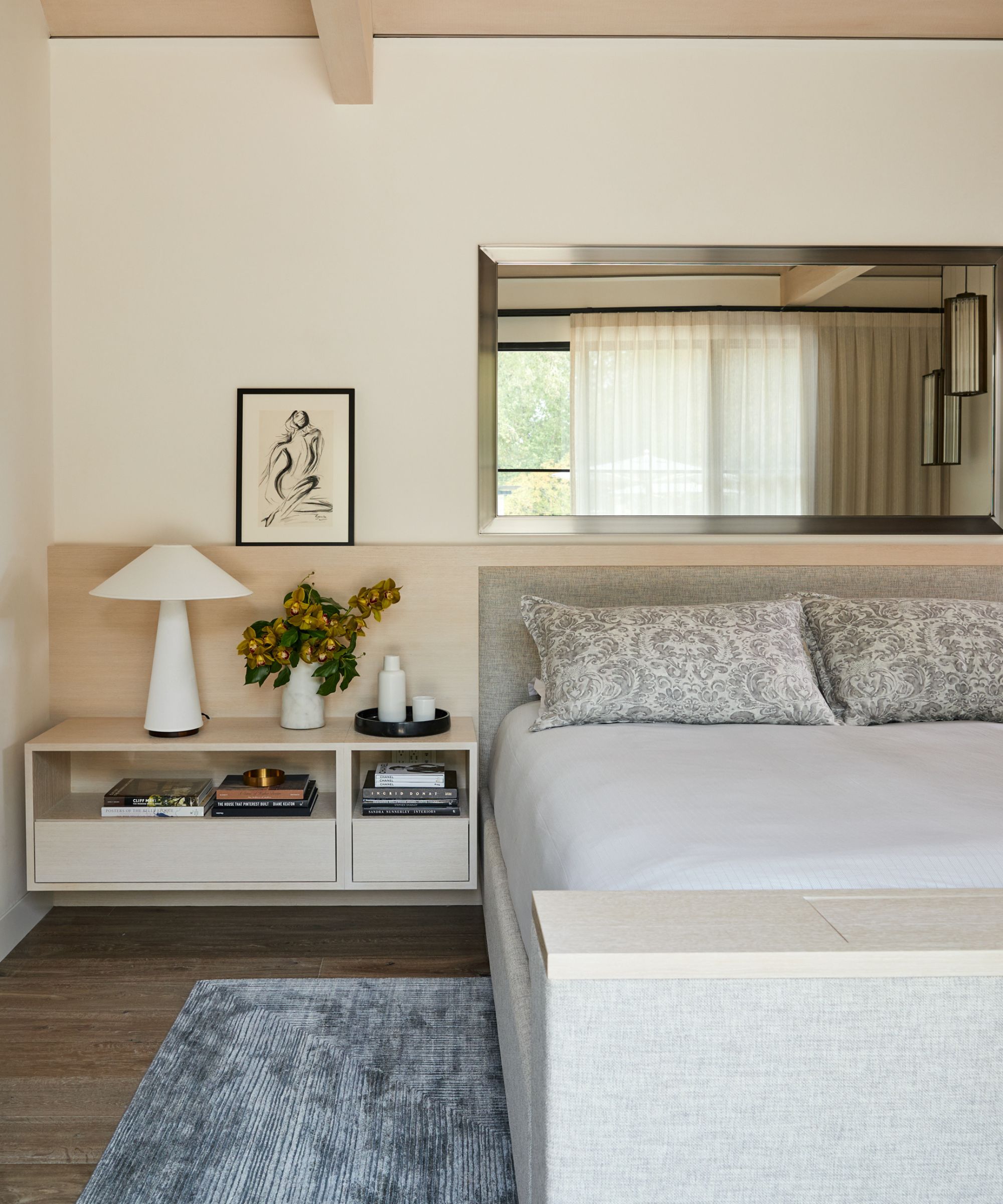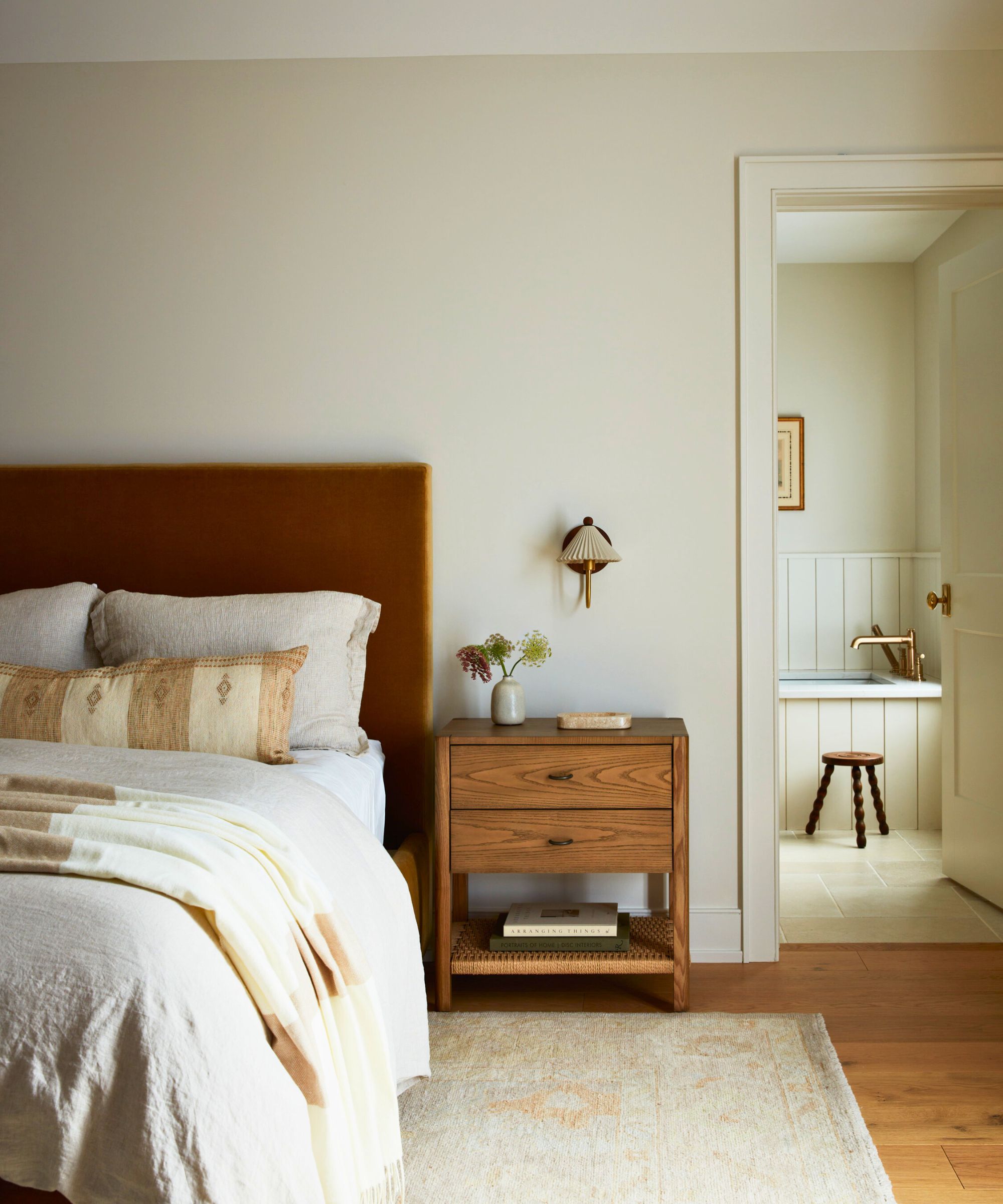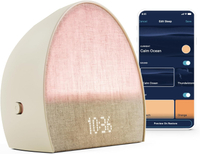Bedroom soundscapes – how sound can improve your sleep quality
Experts reveal the secrets of bedroom soundscaping – and how to find the right sleep sound for you


Although many of us are trying to get tech out of the bedroom to improve our sleep, several electronics – most notably, sound machines – could actually improve our sleep quality.
While these innovative sleep products are most often used to help lull babies to sleep, they can significantly impact adults as well – so long as you find the right bedroom soundscapes.
This is how to use bedroom soundscapes to improve sleep, and how to settle on the perfect sound for you, according to experts.
Bedroom soundscapes
Soundscaping is somewhat self-explanatory. It is the process of using one or more soothing sounds in your bedroom to help you sleep better.
‘The purpose of soundscapes is to provide a listening experience that aims to promote specific emotions or mental states, such as relaxation. Soundscaping is particularly beneficial when trying to fall asleep,’ explains Julia Siemen, certified sleep science coach with Sleep Advisor.

Julia is a certified Sleep Science Coach dedicated to helping you get a better night’s sleep. With her expertise and passion for sleep science, she is always happy to provide knowledge for restful sleep. Her goal is to promote a healthy and happy lifestyle by emphasizing the importance of sleep health.
‘Sound combinations can include sounds like rain, ocean waves, forest ambiance, or gentle instrumental music, so long as they provide a relaxed state conducive to quality sleep,' Julia continues.
'Incorporating natural sounds is helpful as the brain perceives them as constant, pleasant noises, reducing the fight-or-flight response and lowering stress levels. This promotes relaxation, making soundscapes beneficial for improving sleep quality.’
While bedroom soundscapes can benefit everyone, they can also be helpful to people living in loud areas to help block out external noise from traffic, disruptive neighbors, or nearby construction – especially when paired with bedroom soundproofing.
How to pick the perfect soundscape

It is important to note that not every sound will work perfectly for every person when trying to make your bedroom better for sleep.
‘There is no one-size-fits-all answer to which soundscape is the best for sleep. Everyone has different preferences and sensitivities to sound,’ says Dr. Lydia Williams, co-founder of AUTOINFO Medical. ‘Some may find the sound of crashing waves calming, while others may prefer the gentle hum of a fan. Research has shown that certain types of sounds, such as white noise or nature sounds, can aid in promoting deeper and more restful sleep.'
To find the best soundscape to fall asleep fast, Dr. Lydia recommends experimenting with different sounds, layering multiple and single sounds until you find something that soothes you. There are several apps and sound machines that can help with this.
‘It's also important to consider the volume and intensity of the soundscape,’ she adds. ‘Some people may find softer sounds soothing, while others may prefer slightly louder sounds. It's essential to find a balance that works for you and promotes relaxation.’
Hatch Restore Sound Machine Sunrise Clock | View at Amazon
This combination of a sunrise alarm clock and sound machine is one of the best ways to improve your bedroom for sleep. It is also rated one of H&G's best sunrise alarm clocks.
Who does soundscaping benefit?

Although soundscaping is very calming for babies and young children, it can truly benefit anyone regardless of age, assures Dr. Lydia Williams:
‘In today's busy and noisy world, many people have trouble finding a peaceful environment to relax and unwind. Soundscaping can offer a solution by creating a calming atmosphere that promotes restful sleep.’
It can also be useful for people dealing with mental health challenges such as anxiety, insomnia, OCD, or depression, as it provides a calming distraction to help quieten the mind when trying to rest.
‘Exposure to pleasant and natural sounds has shown positive effects on mental health, stress reduction, and cognitive performance,’ Julia explains.
FAQs
What are the three types of soundscapes?
There are three categories for soundscapes:
- Anthropophony – sounds associated with human activity such as chatting, traffic, or the sounds of someone typing.
- Biopony – sounds produced by animals, such as bird song.
- Geophony – sounds made by physical nature, such as waves or rain.
Often, you will have a preference for one of these three groups, so try exploring sounds within the category you find most soothing.
Where can I listen to soundscapes?
There are several ways to introduce soundscapes to your home and bedroom. The easiest is likely using your phone and finding a soundscape you like on a music streaming service. If you want to leave your phone outside of your bedroom, you can use a dedicated sound machine. Both of these methods allow you to set a timer for your soundscapes, allowing you to control when, if at all, they turn off during the night.
While soundscaping brings tech into your bedroom, it can help with green sleep – a natural trend of introducing more natural-inspired elements to your bedroom to help with relaxation and stress reduction. When using a sound machine, consider using natural sounds such as rain or birds, and introduce more real plants and natural colors, even an air purifier if you can't sleep with your bedroom window open, to help create a soothing sanctuary.
Sign up to the Homes & Gardens newsletter
Design expertise in your inbox – from inspiring decorating ideas and beautiful celebrity homes to practical gardening advice and shopping round-ups.

Chiana has been at Homes & Gardens for two years and is our resident 'queen' of non-toxic living. She spends most of her time producing content for the Solved section of the website, helping readers get the most out of their homes through clever decluttering, cleaning, and tidying tips. She was named one of Fixr's top home improvement journalists in 2024.
-
 Kevin Bacon and Kyra Sedgwick's rustic kitchen island is stunning, but controversial – designers say you can get the look without the hassle
Kevin Bacon and Kyra Sedgwick's rustic kitchen island is stunning, but controversial – designers say you can get the look without the hassleA popular material finds an unorthodox home in the couple's kitchen, but experts disagree on whether it should be used – here's how to do it instead
By Sophie Edwards
-
 How to grow grapefruit for homegrown sweet and tangy, highly nutritious harvests – a fruit tree expert shares their planting and care tips
How to grow grapefruit for homegrown sweet and tangy, highly nutritious harvests – a fruit tree expert shares their planting and care tipsFrom planting to harvesting, this is all you need to know about grapefruit trees
By Drew Swainston
